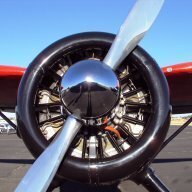It would be nice to have an engine that doesn’t fail at anytime, however some (not all) of the opinion here seems to be based on old engine and old experience which is unqualified and unsupported with any current data.
I think Jabiru is getting it more right than wrong and their current engine is very strong. I believe (support by Jabiru notices) much of the last few engine problems were caused by the lean economy jetting, which had done long term damage to the engine even if only used for a few hours … unfortunately we are still seeing failures today that was caused pre 2007. Some lessons learnt by others around the world, particularly the Africans, showed that if you get the jetting right the engine does run TBO. To simplify the learning, always run your engine EGT under 1250 deg f , which is code for, run your engine rich … if you don’t have EGT’s fitted you have no way of knowing if you are shortening the life of your engine. For what it’s worth, you will also surely shorten the life of any air cooled engine if you run it lean, therefore Jab isn’t on their own.
In my experience I have found Jab are quite reasonable when it has come to putting things right and have been very good at providing support and parts free of charge or heavily discounted. Furthermore I know that Jab take engine failures very seriously and do try to deep dive any failures to develop solutions.
Cheers
Vev


